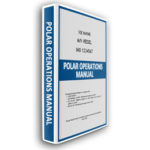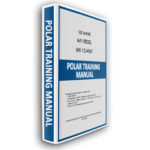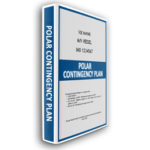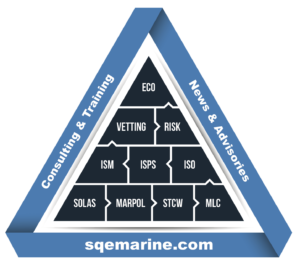
Polar Code: Everything you need for safe transition
IMO adopted the International Code for Ships Operating in Polar Waters (Polar Code) and related amendments to make it mandatory under both the International Convention for the Safety of Life at Sea (SOLAS) and the International Convention for the Prevention of Pollution from Ships (MARPOL). The Polar Code entered into force on 1 January 2017 and covers the full range of design, construction, equipment, operational, training, search and rescue and environmental protection matters relevant to ships operating in the inhospitable waters surrounding the two poles.
Explore how we can help
1. SQE Marine Polar Operations Manual
The Polar Code requires ships subject to the Polar Code to carry a Polar Water Operational Manual (PWOM) in line with IMO Guidelines. Scope of this plan is to provide safety of ship and marine pollution from vessels transiting the Arctic regions.
Benefits
- Master will have a guidance with respect to POLAR operations
- Procedures as per vessel specific arrangements
- Detailed instructions and responsibilities
- Updated with latest requirements and legislation
- Easy record keeping
- Already inspected by most MoU’s PSC Officers / inspector surveyors
2. Polar Training Manual
Every crewmember is required to be familiar with the procedures and equipment contained or referenced in the ship’s PWOM relevant to their assigned duties. Therefore, shipping organizations need to ensure that Masters, chief mates and officers in charge of a navigational watch onboard ships operating in polar waters have completed training to attain the abilities that are appropriate to the capacity to be filled and duties and responsibilities to be taken up, taking into account the provisions of the STCW Convention, 1978, as amended. Polar Training Manual may be provided onboard for training purposes in line with POLAR Trading Requirements.
Benefits
- Master will have a guidance with respect to POLAR code requirements
- Effective training material
- Lessons and courses to enchase crew’s awareness
- Guidance for Polar Operations
3. Polar Contingency Plan
In order to provide safety of ship and marine pollution from vessels transiting the Arctic regions, vessels that transit Arctic regions may also carry onboard a Polar Contingency Plan. Plan is developed in line with IMO Guidelines and common marine practice
Benefits
- Master will have a guidance with respect to POLAR operations contingency planning
- Detailed action plan
- Updated with latest requirements and legislation
- Easy reporting format




